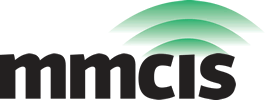Original: http://www.useit.com/alertbox/9710a.html
|
useit.com |
Jakob Nielsen's Alertbox for October 1, 1997:
How Users Read on the Web
They don't.People rarely read Web pages word by word; instead, they scan the page, picking out individual words and sentences. In a recent study John Morkes and I found that 79 percent of our test users always scanned any new page they came across; only 16 percent read word-by-word.
As a result, Web pages have to employ scannable text, using
- highlighted keywords (hypertext links serve as one form of highlighting; typeface variations and color are others)
- meaningful sub-headings (not "clever" ones)
- bulleted lists
- one idea per paragraph (users will skip over any additional ideas if they are not caught by the first few words in the paragraph)
- the inverted pyramid style, starting with the conclusion.
- half the word count (or less) than conventional writing
We found that credibility is important for Web users, since it is unclear who is behind information on the Web and whether a page can be trusted. Credibility can be increased by high-quality graphics, good writing, and use of outbound hypertext links. Links to other sites show that the authors have done their homework and are not afraid to let readers visit other sites.
Users detested "marketese"; the promotional writing style with boastful subjective claims ("hottest ever") that currently is prevalent on the Web. Web users are busy: they want to get the straight facts. Also, credibility suffers when users clearly see that the site exaggerates.
Measuring the Effect of Improved Web Writing
To measure the effect of some of the content guidelines we had identified, we developed five different versions of the same website (same basic information; different wording; same site navigation). We then had users perform the same tasks with the different sites. As shown in the table, measured usability was dramatically higher for the concise version (58% better) and for the scannable version (47% better). And when we combined three ideas for improved writing style into a single site, the result was truly stellar: 124% better usability.
| Site Version | Sample Paragraph | Usability Improvement
(relative to control condition) |
|---|---|---|
| Promotional writing (control condition)
using the "marketese" found on many commercial websites |
Nebraska is filled with internationally recognized attractions that draw large crowds of people every year, without fail. In 1996, some of the most popular places were Fort Robinson State Park (355,000 visitors), Scotts Bluff National Monument (132,166), Arbor Lodge State Historical Park & Museum (100,000), Carhenge (86,598), Stuhr Museum of the Prairie Pioneer (60,002), and Buffalo Bill Ranch State Historical Park (28,446). | 0%
(by definition) |
| Concise text
with about half the word count as the control condition |
In 1996, six of the best-attended attractions in Nebraska were Fort Robinson State Park, Scotts Bluff National Monument, Arbor Lodge State Historical Park & Museum, Carhenge, Stuhr Museum of the Prairie Pioneer, and Buffalo Bill Ranch State Historical Park. | 58% |
| Scannable layout
using the same text as the control condition in a layout that facilitated scanning |
Nebraska is filled with internationally recognized attractions that draw large crowds of people every year, without fail.
In 1996, some of the most popular places were:
|
47% |
| Objective language
using neutral rather than subjective, boastful, or exaggerated language (otherwise the same as the control condition) |
Nebraska has several attractions. In 1996, some of the most-visited places were Fort Robinson State Park (355,000 visitors), Scotts Bluff National Monument (132,166), Arbor Lodge State Historical Park & Museum (100,000), Carhenge (86,598), Stuhr Museum of the Prairie Pioneer (60,002), and Buffalo Bill Ranch State Historical Park (28,446). | 27% |
| Combined version
using all three improvements in writing style together: concise, scannable, and objective |
In 1996, six of the most-visited places in Nebraska were:
|
124% |
It was somewhat surprising to us that usability was improved by a good deal in the objective language version (27% better). We had expected that users would like this version better than the promotional site (as indeed they did), but we thought that the performance metrics would have been the same for both kinds of language. As it turned out, our four performance measures (time, errors, memory, and site structure) were also better for the objective version than for the promotional version. Our conjecture to explain this finding is that promotional language imposes a cognitive burden on users who have to spend resources on filtering out the hyperbole to get at the facts. When people read a paragraph that starts "Nebraska is filled with internationally recognized attractions," their first reaction is no, it's not, and this thought slows them down and distracts them from using the site.
October 15: Functionality applets vs. content applets: when to step outside the Web page
List of other Alertbox columns
